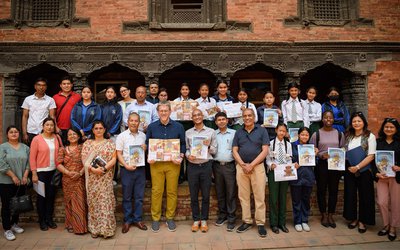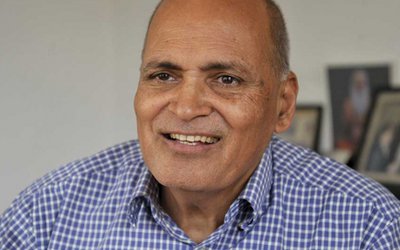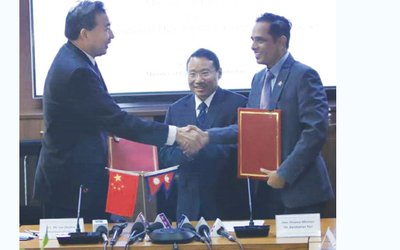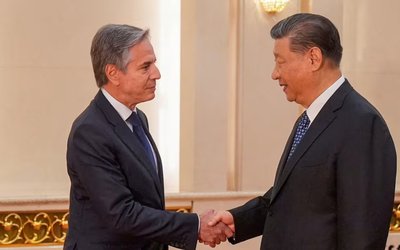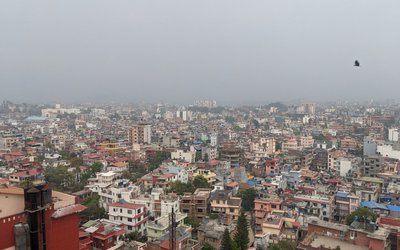Beginning of the budgeting system in Nepal can be traced back to the year 2008(1951),after the overthrow of the Rana rule in February 1951, when Suvarna Sumsher, finance minister in then coalition government, made public the first ever estimate of government’s annual revenue and expenditure. The budget with an outlay of Rs.50.25 million covered the period from March 1951 to February 1952. This was a humble beginning and was based more on the knowledge and related experience of the formulators rather than authentic facts and figures. On account of instable political situation thereafter, budgets were prepared, presented and approved, following different methods on an ad hoc basis. A more comprehensive and systematic presentation of budget was done by B P Koirala-led government when deputy prime minister and minister in charge of finance Suvarna Sumsher made public the budget, reading it before the lawmakers in the first ever elected Parliament of Nepal on 13 August 1959. The budget with an outlay of Rs.249 million (Rs.24, 8958000) had set aside Rs.126 million under general expenditure head and Rs.148 million under development head. It also showed a surplus of Rs.1.84 million, after meeting general expenditure. Unlike previous budgets, which contained estimates both in Nepali and Indian rupees, this budget for fiscal year( FY)2016\17 stated budgetary figures only in national currency. It also contained ideas of visionary B P, covering different areas, and general Subarna had shown our economy a path to walk on. Unfortunately, they did not get time to work for the betterment of this country and its people as the elected parliament was dissolved on 15 December 1960 and Koirala along with many other leaders were thrown behind the bar. In the party less panchayat polite that followed, many finance ministers presented numerous budgets with promises to do this and that and the government/s were often accused of not being able to execute the budget as is the case now. Many things stated in the budget remained unfulfilled then also but not to the extent that is seen in recent years.
Data available show that government expenditure has increased phenomenally over decades under different political systems and governments. The budget presented by Suvarna Sumsher in 1959 had swollen by about five times, compared to the first ever budget he prepared in 1951.After the abolition of the party less political system and formation of an interim government headed by NC President K P Bhattari, finance minister Devendra Raj Panday made public a budget in the tune of Rs.19 billion 79 crores 17 lakhs, which was broken into two heads (general Rs.7billion 46 crores and development Rs.12billion 33crores). Situation was very fluid both politically and economically and many thought it was almost impossible to accomplish the twin task of giving a new constitution to the nation and organize parliamentary elections in the given timeline of one year. A great leader of high moral and unparalleled level of integrity Kishun jee not only made this possible but also stopped derailment of the economy, of course with the active support of honest, wise and courageous minister like Dr. Panday. Kishun jee lost the election but got NC victorious and happily saw the rise in power of G P Koirala.Then little known Mahesh Acharya, handpicked by Koirala as minister of state for finance, presented budget for FY 2048\49 with an outlay of Rs.26 billion 64 crores and 9 lakhs of whichRs.9 billion 74 crores 48 lakh was under general expenditure head and Rs.16 billion 89 crores 50 lakh came under development head.
Budget ballooning works of governments have continued unabated in more recent years also. Budget made public a decade ago (fiscal year 2068\69) had an outlay of Rs. 384 billion, which swelled to Rs.1793 billion in FY 2079\80,registering an increase of 367 percent. With the exception of FY 2077\78 when the government shrank the budget by Rs. 58 billion, compared to a year earlier level, no other year has seen such a reduction. Every government wanted to make sure that the public expenditure programme they propose was larger than that of the previous year. There is no disagreement that government expenditure should increase over time but the difficult-to-digest is the fact that these increases are taking place in the face of huge amounts remaining unspent each year. In FY 2068\69, Rs. 90 billion remained unspent, which increased to Rs. 441 billion in FY 2076\77. This embarrassingly huge unspent amount may have compelled the concerned to slash expenses by Rs. 58 billion in the following FY but this remained an exception and the authorities continued to swell budgets thereafter. Despite very poor spending performance in FY 2078\79 when Rs.323 billion remained unspent, buget in the following FY increased by Rs. 161 billion. It has become clear that the concerned are interested in spreading pleasant things rather than formulating implementable schemes for the upliftment of people. More pathetic is the situation in regard to capital expenditure, a major portion of which remains unspent each year. Equally annoying is the fact that each year the approved estimates are slashed in half yearly review of the budget. This FY also, the budget has been slashed by 14 percent.
Irrespective of the polite and personalities running the show in the country and their countless promises over these numerous decades, people have not been benefitted and it does not look like something nice for the people is in the offing. It is crystal clear that those managing state affairs are not at all interested in the wellbeing of people and their guiding mantra\principle seems to be, ‘Stay in power to make money and make money to stay in power’. The fraudulent business of sending Nepali citizens abroad as fake Bhutanese refugees in which noted politicians, their family members and high ranking government officials have been implicated, is a vivid manifestation of our top peoples’ greed for money. Legal cases have been filed against some but a few very influential people (men and women) have remained untouched, despite urging from different quarters that nobody involved in this heinous crime should be spared. This incident has internationally tarnished the image of Nepal. How we wish the brain used in actualizing these kinds of criminal schemes could be used in giving momentum to our ailing economy.
It is difficult to think of a year when the stated economic growth has been achieved in Nepal. This year (FY 2079\80) also the wished growth of 8 percent is not going to be achieved admits the government. Interestingly, this admission that the economy would grow by just 2.16 percent has come in the backdrop of estimates by several multilateral agencies that the economy would grow by about 4 percent in the current FY. Further, government expenditure is exceeding revenue collection by about Rs.300 billion. Of the two types of expenditures (recurrent and capital), capital expenditure has remained disappointing as usual. Nepal’s total international trade has decreased and so is the case with foreign direct investment and grant. Despite contraction in international trade and some reduction in import, Nepal’s trade deficit is still alarming (Rs.1204 billion in 10 months) and it is disappointing that import of agricultural products is on the rise in this agricultural country. It may be noted that import of agricultural products has doubled in the last 5 years and in FY 2078\79 Rs.341.51 billion worth of agricultural and livestock products were imported, which was Rs.284.98 billion in FY 2077\78.In the midst of these debacles, rituals of presenting policies and programmes and budgets of the government do take place annually, which of late have failed to attract attention of people.
The season of annual rituals began with newly elected President Ramachandra Paudel presenting the policies and programmes of the government at the joint meeting of both Houses for the next FY 2080\81 (2023\2024).Like previous documents, this document also has made lots of promises, which include among others, to institutionalize socialist oriented economy, effective economic reform, quality infrastructure construction and increase in production and employment. This was followed by presentation of Economic Survey of FY 2079\80 by Finance Minister on May 28. Mahat sees a strain in resource management emanating from contraction in economic activities. Rise in the prices of fossil fuel, food grains and raw materials in the world market are also blamed for the problems at home. Disappointing return (1 percent) on government investment in public entities is also lamented.
The most important ritual of the season took place in the joint session of the House of Representatives and National Assembly on May 29 with Mahat reading the budget for the FY2080\81, taking more than three hours for recital. The budget with an outlay of Rs, 1751 billion is Rs 42billion smaller than the budget of the current FY. Recurrent expenditure commands 65 percent of the total allocation, Rs. 374 billion comes under financial management head, and Rs. 408 billion is for grant distribution at provincial and local levels. Capital expenditure at Rs.303 billion has been slashed by Rs. 73 billion, compared to the amount (Rs 380 billion) in the on-going budget. In the face of low capital expenses now and many years in the past and ever rising social security related obligations, this reduction does not surprise observers but they would have loved to hear Mahat sounding determined to achieve the hoped growth of 6 percent, spending at least Rs.380 billion in the next FY. Worth noting is the fact that social security and pension related expenses went up by 6 times in a decade. Revival of Parliamentarians’ Development Fund has also invited lots of criticism.
To source expenses, Rs. 1248 billion revenue is expected and it also hopes to get foreign grants (Rs. 50 billion), external loan (Rs.213 billion) and internal borrowing will be in the tune of Rs.240 billion. Unlike the current FY in which revenue collection has been unsatisfactory (less than Rs.1000 billion expected) and flow of resources from external front has been very disappointing , let us hope adequate income flows into the coffer and different measures related to tax relief and capital requirement succeed in encouraging internal as well as external investors. Proper utilization of the allocated subsidy (Rs.30 billion) to facilitate timely import and distribution of chemical fertilizers may provide some relief to our farmers who are seen each year urging the concerned to make the input available on time. We wish Mahat luck in arresting further deterioration in the economy at a time when growth is expected to be around 2 percent this FY, inflation is on the rise (above 7 percent), internal demand has contracted and so has industrial output, all pointing towards an impending stagflation.
Dr. Rawal is a former governor of NRB

Dr. Tilak Rawal
Dr. Rawal is former governor of NRB.
- Prachanda Outsmarts Again
- Apr 14, 2024
- Prachanda Completes One Year
- Jan 26, 2024
- Terrible Times To Continue
- Oct 12, 2023
- Moves And Counter Moves
- Feb 27, 2023
- Perpetual Instability
- Dec 10, 2022






